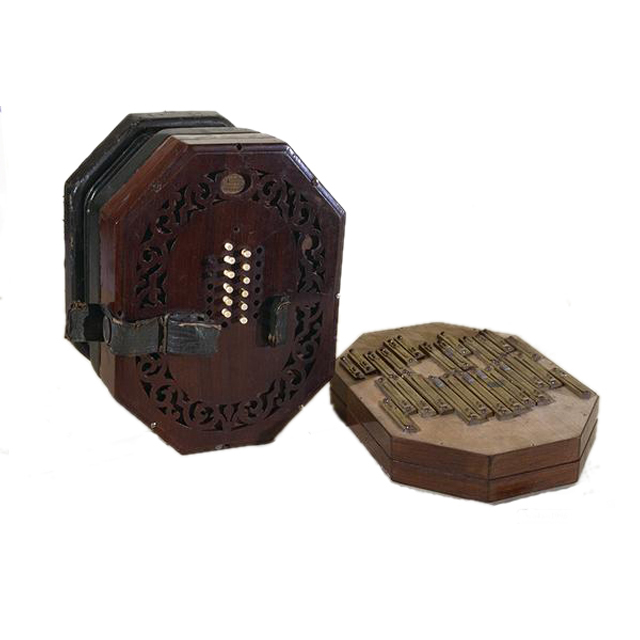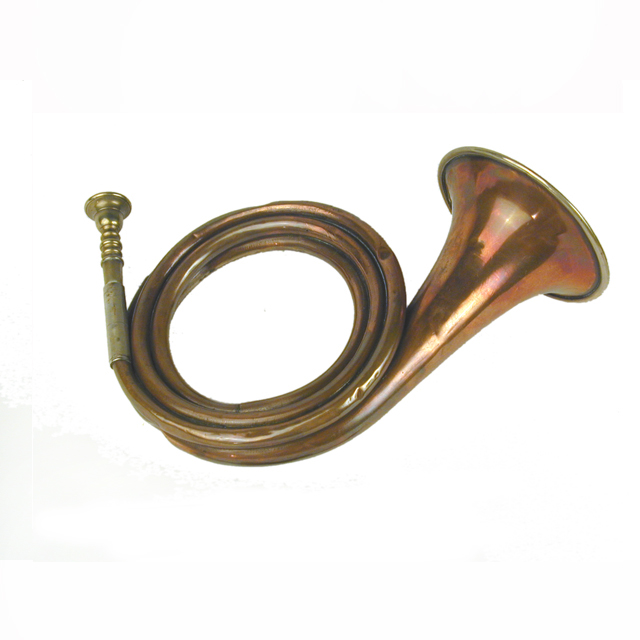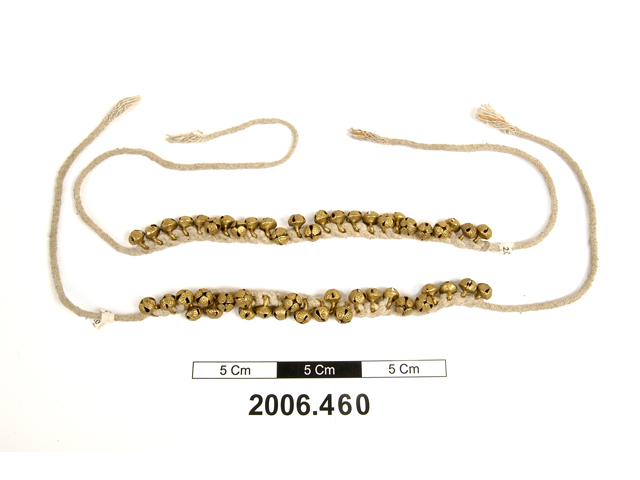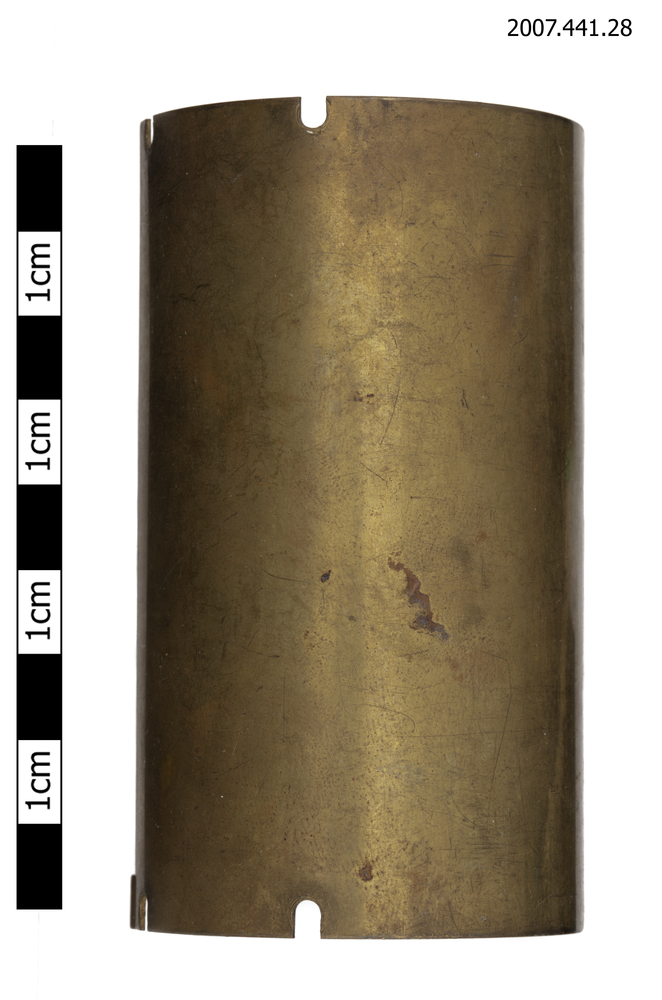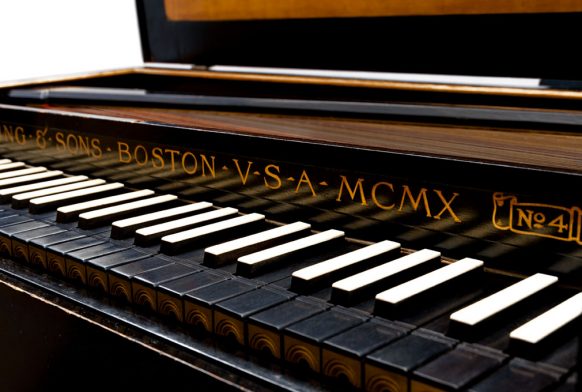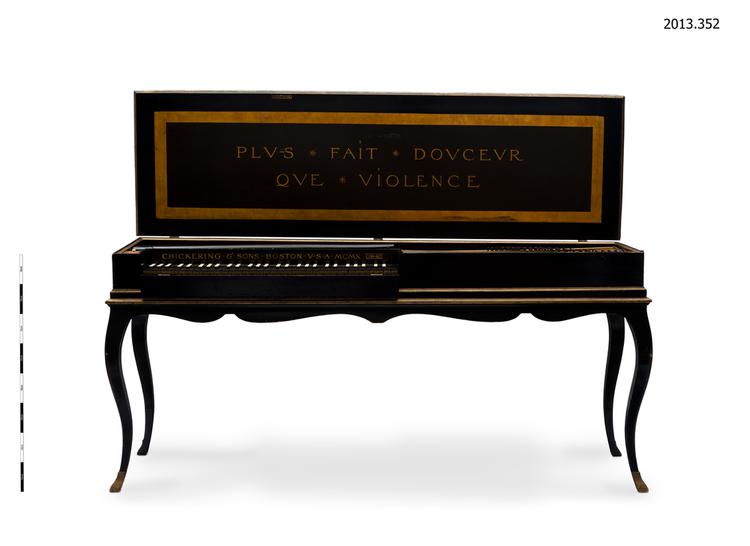
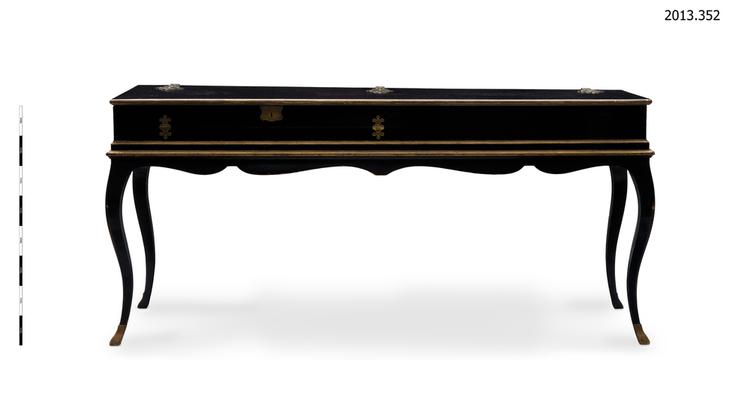
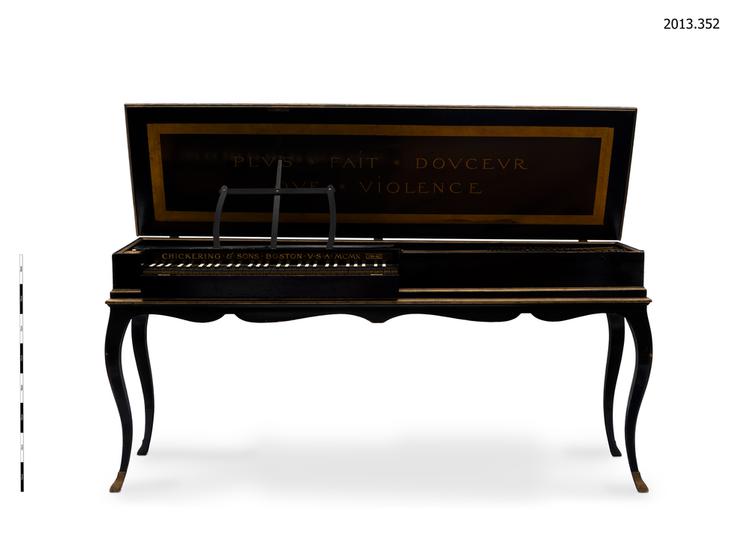
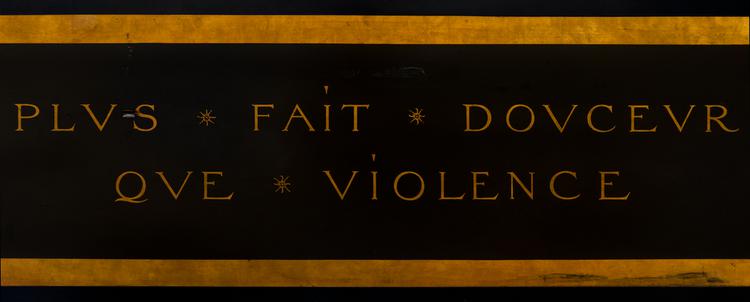
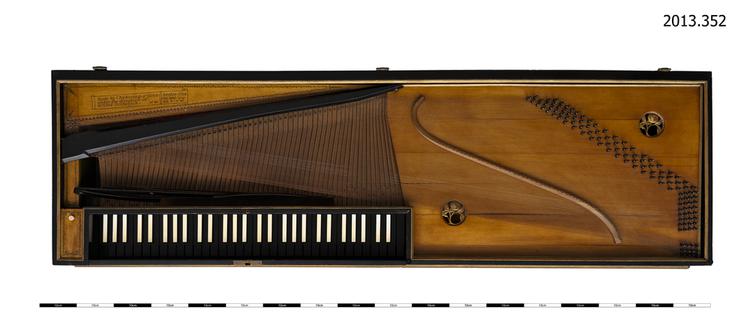
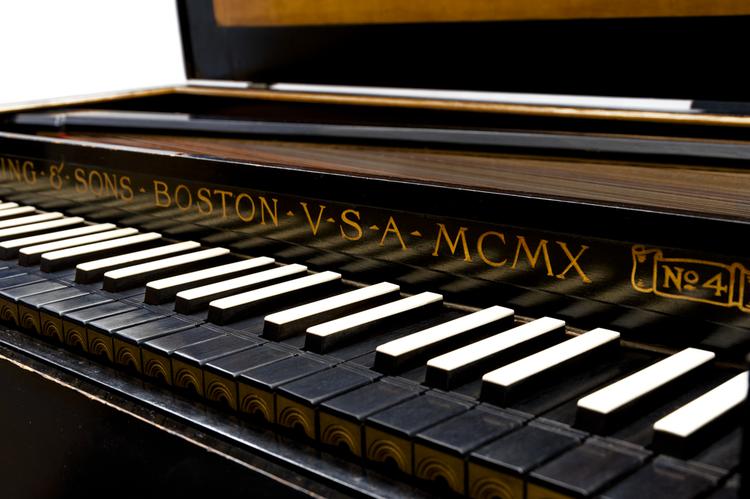

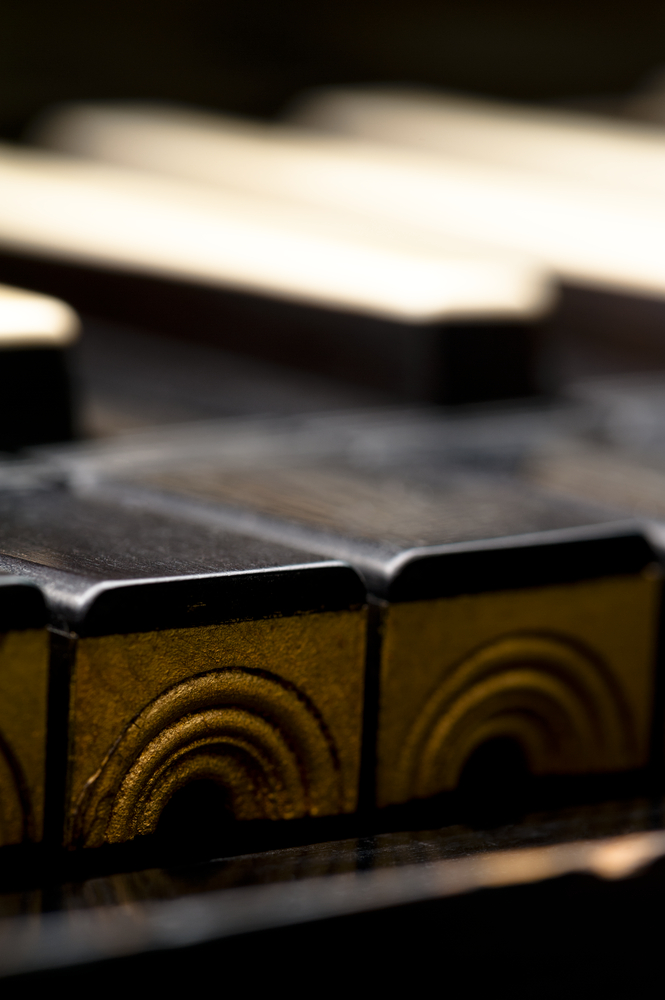
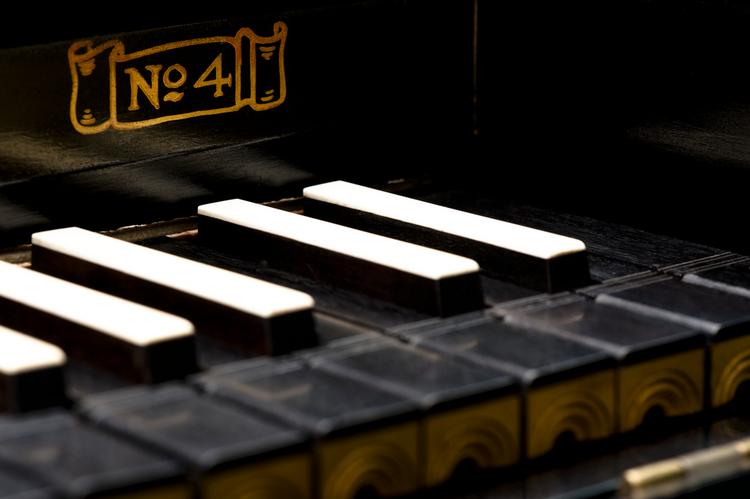
Clavichord by Chickering under the direction of Arnold Dolmetsch, No. 4 with detachable cabriole stand, two stringing schedules, original envelope in three pieces, a fragment of paper giving stringing instructions, seven spare strings, one length of woven cotton red binding tape, one tuning hammer, three gauze backings for the rose, one length of black woolen cloth, four tuning wedges, one key and one leather lid cushion button. Although the exterior is black with gold edgings, the instrument was previously painted green and this colour remains on various interior surfaces including the nameboard. The lid has the French motto common to many later Dolmetsch clavichords: Plus fait douceur que violence (More is achieved by gentleness than violence.)
The following additional remarks were offered by Richard Troeger, October, 2016, in an email to MWaitzman:
Clavichord No. 4 is unusual among the Dolmetsch/Chickering clavichords in several respects. First, the barring ("ribbing") on the underside of the soundboard is unlike that on any of the other Chickering clavichords. Apart from No. 4 and another seeming experiment, Dolmetsch used one basic ribbing arrangement on the first dozen instruments in the series and another on the subsequent 22 examples, but No. 4 possesses a series of six exactly parallel ribs crossing (at 4-inch intervals) underneath the string-bearing bridge on the soundboard, these ribs set at right angles to the bridge. There is yet a further rib beyond the bass end of the bridge. At least two of these light ribs are visible at present through cracks in the soundboard, most notably near the front rose, where the two sides of a crack are vertically displaced. Such ribbing, unlike the ribbing of the other Chickering clavichords, is by modern expectations rather piano-like. Uniquely among the Chickering clavichords, on this instrument the sounding string length of c" ("C above Middle C") is almost exactly that of the usual c-sharp" on these instruments, and the other string lengths are similarly shorter than usual throughout the compass. Thus the appropriate pitch would appear to be a semitone above the usual A=435 or 440 of the time. ("A" above "Middle C" vibrates at 440 cycles per second in today's standardized pitch.) Was the bridge glued on in the wrong position? Or set thus intentionally? If not a mistake, the scaling could represent an experiment in either a higher-pitched instrument or in slacker strings at normal pitch. The heavy ribbing may have been adopted independently of the scaling issue, but it is possible that the ribs were thought necessary to withstand a higher pitch's increased tension on the (very thin) soundboard. Perhaps for the same reason, the covered ("overspun") bass strings possess cores of steel rather than the usual brass: the steel is less likely to break. If this instrument was indeed pitched a semitone high, the extra bass tension might not only require the tougher, steel-core strings, but may have led to the case distortion and subsequent self-destruction of this clavichord. On the other hand, the (brass) stringing in the top two octaves is also heavier than usual (by one gauge size) and was apparently installed, and certainly recommended by Dolmetsch himself in a note found in the instrument's cubbyhole. At normal pitch, the heavier string diameters would counteract the slackness of the shorter scaling. (Indeed, even at normal scaling, Dolmetsch's unusually light treble stringing on these instruments creates a small tone and too-flexible touch, and would be made worse by shorter strings.) [Troeger's complete remarks may be read in the blue binder (history file) for this instrument or in MW's Individual Instruments folder on the T: drive.]
The instrument belonged to Edward Perry Warren who was born in Boston, MA, USA but was educated at Oxford (UK) and settled in Lewes, Sussex. Together with his lifelong friend, John Marshall, he established the Lewes House Brotherhood, an all male group of aesthetes who pursued cultural and intellectual interests in the manner of their understanding of Greek antiquity. Warren was a prolific collector and he supplied many items to the Boston Fine Arts Museum through his brother who was Chairman of the Trustees. He also acquired for the British Museum the so-called 'Warren cup'. The clavichord is mentioned once in EP Warren's biography (Bachelors of Art, Edward Perry Warren & the Lewes House Brotherhood, by David Sox, Fourth Estate, London, 1991, p.213.) "Shortly after dinner one retired to one's study and reading; but when there were guests it was conversation and music, for Warren played the clavichord beautifully, or Thomas the piano."



